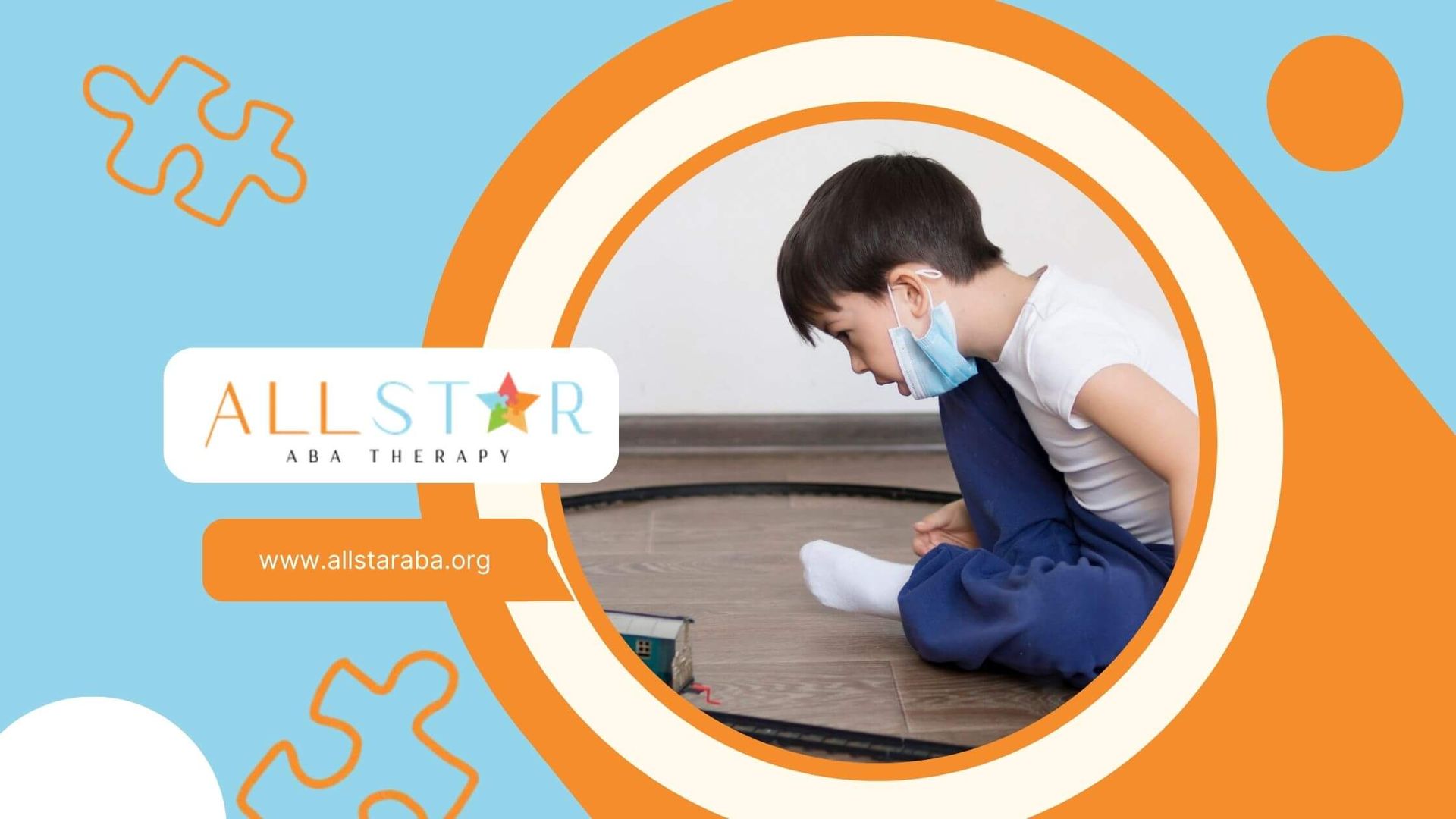New Paragraph
Autistic T-Rex Arms: Understanding and Support
In the autistic community, some people show special ways of expressing themselves. For example, they might hold their arms like a T-Rex. This posture can help them feel secure and deal with sensory overload. This exploration seeks to highlight this unique behavior and promote support and understanding for autistic individuals who display it.
Exploring the Phenomenon of T-Rex Arms in Autism
"Autistic T-Rex arms" is a special way some people with autism spectrum disorder (ASD) hold their arms. They keep their arms bent at the elbows and close to their bodies. This makes their arms look like a T-Rex's small forelimbs. This posture usually comes with other repetitive movements or certain positions of the hands.
It’s important to understand that these arm positions are not random. They relate to how a person processes sensory information. Also, they can be a form of stimming. Knowing this helps us see why autistic T-Rex arms are meaningful in understanding autism spectrum disorder.
Defining T-Rex Arms within the Autism Spectrum
T-Rex arms are a specific type of stimming behavior found in the autism spectrum. Stimming includes repeated movements or sounds. These can give comfort, help manage emotions, and handle sensory input. For some people, holding their arms at a near 90-degree angle provides predictability and stability, especially in places that may feel overwhelming.
It's important not to see T-Rex arms as only negative or disruptive. Understanding why people use this coping method for sensory regulation can help us be more accepting and show empathy.
Also, remember that not everyone with autism will show T-Rex arms. The strength and frequency of this behavior can be very different from one person to another.
Common Misconceptions and Clarifications
It's common for those who don’t understand neurodiversity to misread T-Rex arms. This can lead to feelings of discomfort and judgment. It's important to clear up some common misunderstandings:
- T-Rex arms are not a choice. This behavior often happens without thinking. It is usually a response to sensory input and is not meant to be disruptive or different.
- People with T-Rex arms are not trying to be difficult. This type of posture helps them manage sensory experiences and find a sense of security.
By sharing correct information and challenging stereotypes, we can create more understanding and acceptance of neurodiversity in its many forms.
The Sensory and Motor Implications of T-Rex Arms
To understand why autistic people might use the T-Rex arm posture, we need to look at sensory processing and motor skills. Many autistic individuals deal with sensory overload. This means normal things like sounds, lights, and textures can feel too intense and hard to handle.
They can reduce sensory input by holding their arms in a certain way. This helps lessen their discomfort and brings a sense of calm. Their posture can also relate to how their muscles work and how well they coordinate movements, shaping their preferred range of movements.
Sensory Sensitivities and Motor Challenges Explained
Sensory sensitivities in autistic individuals can show up in different ways. This can make some places or situations hard to deal with. For some people, the sensation of their arms touching their sides can be bothersome. This may cause them to keep their arms away from their bodies. For others, holding their arms out may feel hard or wobbly.
In these cases, the T-Rex posture becomes a way of stimming. This helps autistic individuals handle their sensory experiences. The T-Rex posture reduces extra sensory input and gives a sense of body awareness. This can make them feel more comfortable and calm.
It's important to know that these sensory and movement differences are not bad things. They are just different ways the brain processes information and controls movement. This shows how varied human experiences can be.
How T-Rex Arms Affect Daily Activities
T-Rex arms can make daily tasks harder. Depending on how severe the condition is, things like reaching for items or getting dressed may take longer or require more effort. It’s important to understand these challenges and offer support instead of pointing out problems.
Talking openly can help a lot in these situations. When caregivers listen to someone's personal experiences and struggles, they can create a more supportive environment.
Small changes to daily tasks, using special tools, and focusing on independence can empower individuals. This helps them feel more confident while handling their daily lives.
"Autistic T-Rex Arms" can be a challenging motor behavior to understand. If you're seeking support for your child or loved one, consider reaching out to an autism therapist near me. Qualified professionals can provide valuable guidance, develop personalized strategies, and create a supportive environment to address these motor challenges.
Communication and Social Interaction
For autistic people, T-Rex arms and other hand movements can help them communicate without words. These gestures can happen when talking about their feelings, or they may be the main way they show discomfort, excitement, or the need for space.
It's important to see and respect these nonverbal signs. This can help us have better communication with autistic individuals and build strong connections. By understanding these physical signs, we can close communication gaps and make a more inclusive environment.
T-Rex Arms as a Non-Verbal Cue
While autistic people might talk to communicate, their body language is important too. "T-Rex arms" are part of how they show their feelings and intentions.
If you don't know much about how autistic people communicate, you might miss these signs or misunderstand them. For instance, if someone flaps their hands or has T-Rex arms up more, it can mean they are excited or anxious, not that they are being rude or uninterested.
By learning about the details of autistic body language, we can better understand the messages they share. This can help us have more kind and effective interactions.
Impact on Social Skills and Peer Relationships
Navigating social interactions can be hard for people with autism. Sometimes, physical signs like T-Rex arms can make these challenges worse. When peers do not know much about autism, they might misread these behaviors. This can lead to misunderstandings or social exclusion.
In the autistic community, there is often more understanding and acceptance. Sharing experiences helps create a place for empathy and belonging.
It is important to promote awareness and understanding of autism in larger social settings. By teaching neurotypical people about why these behaviors happen, we can help create empathy, acceptance, and more welcoming social places.
Strategies for Parents and Caregivers
Parents and caregivers are very important in helping autistic children who show T-Rex arm behavior. It is vital to understand the sensory and emotional reasons behind this behavior. We need to remember that punishing or trying to stop this behavior can make anxiety worse and hurt self-esteem.
Instead of punishment, using a kind approach focused on strengths is important. By making a safe environment where children feel understood, promoting open talks, and praising their unique ways of expressing themselves, caregivers can help these children do well.
Creating a Supportive Home Environment
A home that is friendly to the senses can be very helpful for autistic children, especially those who show T-Rex arm behavior. Reducing sensory overload is key to making them feel calm and safe. Here are some ways to do this:
- Minimize visual distractions: Use calming colors, reduce clutter, and create quiet spaces to help with visual peace.
- Manage auditory input: Consider using noise-canceling headphones, adding soft furnishings to soak up sound, and setting specific quiet times to control noise levels.
- Create tactile comfort: Offer soft textures, and weighted blankets, and allow comfortable clothing options to help with tactile sensitivities.
By designing a space that meets a person's sensory needs, you can create a feeling of belonging and help them learn self-regulation.
Encouraging Independence and Confidence
Supporting autistic children is very important. It is just as important to help them become independent and confident. Letting them be part of daily tasks, even when changes are needed, can help them feel good about themselves.
It’s great to celebrate small wins and pay attention to their strengths. Positive feedback can help improve their self-esteem and encourage them to keep trying.
Raising an autistic child is a unique and rewarding journey. By accepting neurodiversity, parents can help their children feel confident and true to themselves as they grow.
Role of Professionals in Providing Support
Educators and therapists are important for helping autistic children who show T-Rex arm behavior. These children need special support in schools. By understanding why these behaviors happen, teachers can adjust their methods. This helps to make the classroom a better place for everyone.
Occupational therapists who focus on sensory issues can give great help in this area. They can create customized plans to help children deal with sensory challenges. With their support, kids can learn ways to handle sensory input better. This leads to improved self-control and comfort.
Educational Adjustments and Accommodations
Implementing appropriate educational adjustments and accommodations can significantly enhance the learning experience for autistic students who exhibit T-Rex arm behavior. Collaboration with a Board Certified Behavior Analyst (BCBA) can be invaluable in creating individualized plans that address specific needs.
Here are some examples of accommodations:
| Accommodation | Description |
|---|---|
| Sensory Breaks | Allowing brief breaks to engage in sensory activities or decompress in a quiet space can help manage sensory overload. |
| Flexible Seating | Providing alternative seating options like beanbag chairs, exercise balls, or standing desks can promote comfort and focus. |
| Visual Supports | Using visual schedules, checklists, or social stories can enhance understanding and reduce anxiety in structured environments. |
Inclusive education means valuing and celebrating neurodiversity, creating a learning environment where all students feel safe, respected, and supported.
Occupational Therapy and Sensory Integration Techniques
Occupational therapy, especially focusing on sensory integration, can help autistic individuals who use T-Rex arm posturing to cope. Skilled occupational therapists team up with people to create useful ways to handle sensory input and improve self-control.
Some helpful strategies include fun sensory activities like swinging, deep pressure massage, or wearing weighted vests. These activities give the nervous system the input it needs. They help the body understand and react better to sensory information. This can lower self-stimulatory behaviors.
By offering personalized therapy and working together, occupational therapists can help individuals find good ways to cope, improve how they process sensory information, and feel more confident in their daily lives.
Navigating Public Perception and Advocacy
Navigating public spaces can be tough for people with autism. This is often because of misunderstandings and a lack of knowledge about neurodiversity. It is important to raise awareness and accept autistic behaviors, like T-Rex arms. These steps will help create a more inclusive society.
Advocacy is very important in changing how the public sees autism and in promoting understanding. By sharing personal stories, having honest conversations, and correcting myths, we can help others feel more empathy and acceptance.
Educating the Public to Foster Understanding
Teaching people about autism and how it shows up in different ways is very important. This helps build acceptance and inclusion. When we raise awareness, we can break down stereotypes and encourage empathy. Sharing correct information through education programs, social media, and community events can change how people see autism.
It is also important to highlight the strengths and talents of autistic individuals. When we talk about their unique sensory experiences and communication styles, we can fight against common misunderstandings. It's essential to show autism as a different way to think and experience life, not as something wrong.
To create a society that accepts neurodiversity, we all need to work together. By learning more, having open discussions, and supporting inclusivity, we can create a world where everyone is valued, respected, and empowered.
Advocacy Efforts for Inclusion and Accessibility
Advocacy for autistic individuals goes beyond just raising awareness. It focuses on making real changes to promote inclusion and accessibility. This means supporting policies that help with early intervention, ensuring access to good education and healthcare, and providing job and community chances.
Accessibility includes many projects. We can create sensory-friendly public spaces and encourage using visual aids and communication tools. Our goal is to build places where autistic individuals feel safe, comfortable, and strong enough to join in fully.
If we work together, push for policy changes, and support inclusion in our communities, we can build a world that truly values neurodiversity. This will help autistic individuals not just survive but thrive.
Conclusion
Individuals with autism who have T-Rex arms need our understanding and support. We should clear up any misunderstandings and see the sensory and motor difficulties they face. This will help us build a more welcoming community. Giving caregivers, teachers, and other workers good strategies is important to help those with autism. We must also educate the public and push for inclusion. These steps are key to promoting acceptance and access. Let's join together to celebrate diversity. We need to provide the right tools and resources for individuals with autism to succeed. Understanding and support are essential for creating a kinder and more inclusive society.
At All Star ABA in Maryland, we understand the unique challenges and joys of finding meaningful gifts for nonverbal autistic adults. Our experienced therapists can offer valuable insights and personalized recommendations based on individual interests and needs. We believe in celebrating the unique strengths and interests of each individual, and we're here to support families in finding gifts that bring joy and enhance quality of life.
Frequently Asked Questions
Why do some individuals with autism exhibit T-Rex arms?
For people with autism on the autism spectrum, T-Rex arms may help with sensory overload. This action can be a form of stimming. It helps them feel more comfortable and relaxed in their body posture.
How can educators support students who show T-Rex arm behavior?
Educators can help students with autism by making changes to support their needs. They can adapt teaching methods and approach behaviors with kindness and understanding.
Are there specific therapies recommended for managing T-Rex arms?
Occupational therapy that targets sensory integration can help people with autism. It teaches them ways to handle sensory input. This therapy also helps them create new ways to cope with challenges.
Source:
https://www.focusbear.io/blog-post/t-rex-arms-embracing-neurodivergence-unique-behaviors#:~:text=So%2C%20what%20exactly%20is%20%22T,level%20in%20a%20given%20situation.
https://blossomabatherapy.com/blog/autistic-t-rex-arms
https://www.autismspeaks.org/sensory-issues#:~:text=Many%20autistic%20people%20experience%20hypersensitivity,people%20can%20easily%20tune%20out.
https://www.jagpt.com/blog/using-sensory-integration-therapy-in-occupational-therapy/
Need Support?
We're Here to Help!
Our experienced team is ready to assist you. Reach out today to discuss how we can support your child's development and well-being.
Get started with expert ABA therapy today.








